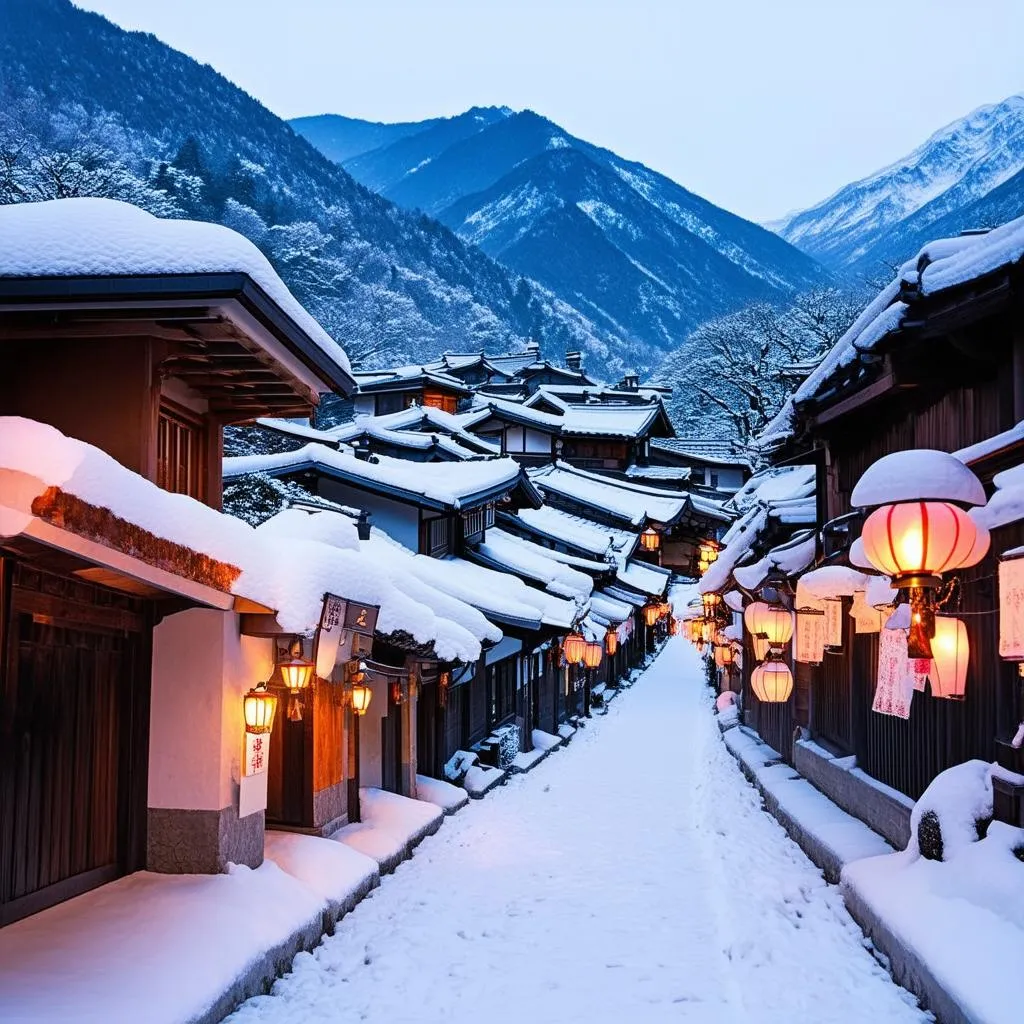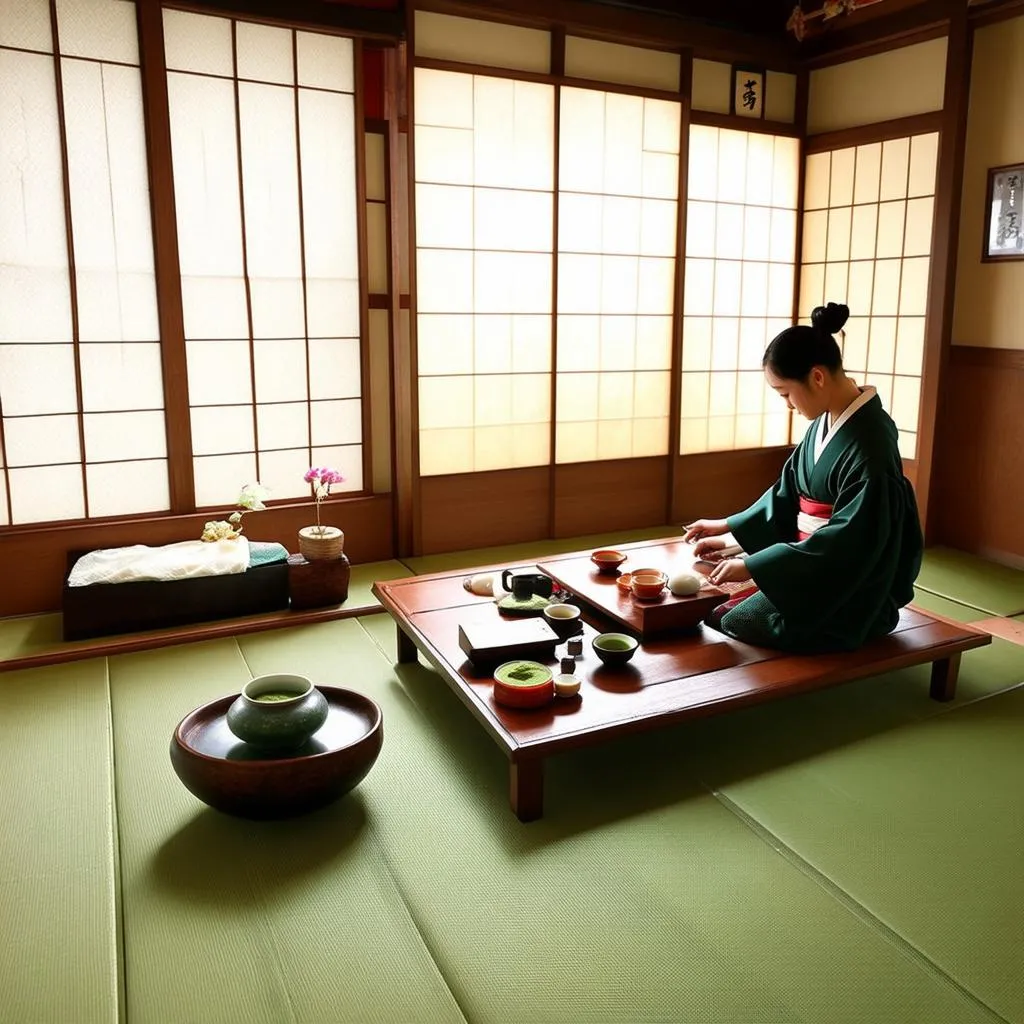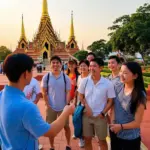Have you ever dreamed of stepping back in time and experiencing the charm of old-world Japan? It’s a dream within reach when you embark on a journey to explore the ancient villages scattered across the Japanese countryside. These villages, often called “historical villages” or “preserved districts,” offer a glimpse into a bygone era, with traditional architecture, local crafts, and a slower pace of life.
Unveiling Japan’s Hidden Gems: What Makes Ancient Villages Special?
Imagine strolling down narrow streets lined with wooden houses, their eaves adorned with intricate carvings. This is the magic of exploring Japan’s ancient villages. Here, time seems to move a little slower, and the bustle of modern life fades away.
Here’s what makes these villages so captivating:
- Architectural Wonders: From thatched-roof farmhouses to grand samurai residences, the architecture showcases centuries-old craftsmanship and design.
- Living Traditions: Many villages are home to artisans who keep traditional crafts alive, such as pottery, weaving, and woodworking.
- Cultural Immersion: Experience the warmth of local hospitality, sample regional cuisine, and perhaps even participate in a traditional tea ceremony.
- Natural Beauty: Often nestled in picturesque landscapes, these villages offer stunning views of mountains, rivers, or coastlines.
Planning Your Ancient Village Adventure
Ready to be transported back in time? Here’s what you need to know:
Choosing the Right Village
Japan boasts many well-preserved villages, each with its own character:
- Shirakawa-go and Gokayama (Gifu and Toyama Prefectures): Famous for their gassho-style farmhouses with steep, thatched roofs designed to withstand heavy snowfall.
- Tsumago and Magome (Nagano Prefecture): These villages along the Nakasendo Trail offer a glimpse into Edo-period travel and stunning mountain views.
- Kiso Valley (Nagano Prefecture): Explore charming villages like Narai and Yabuhara, known for their preserved Edo-era post towns.
- Ine no Funaya (Kyoto Prefecture): Unique for its waterfront houses built directly over the water, creating a picturesque scene.
Getting There and Around
- Public Transportation: Many villages are accessible by train and bus, but some may require transfers.
- Japan Rail Pass: A cost-effective option for extensive travel by train.
- Hiking: Some villages are connected by scenic hiking trails, like the Nakasendo Trail.
Best Time to Visit
- Spring (March-May) and Autumn (September-November): Pleasant weather and beautiful scenery with cherry blossoms in spring and vibrant foliage in autumn.
- Summer (June-August): Warm weather, but can be crowded.
- Winter (December-February): Magical snowy landscapes, but some areas may have limited accessibility.
 Snowy Japanese Village
Snowy Japanese Village
What to Expect and Tips for Your Visit
- Respectful Exploration: Remember that these are living communities, so be mindful of residents and their privacy.
- Footwear: Comfortable walking shoes are essential, as you’ll be doing a lot of exploring on foot.
- Cash is King: Some smaller establishments may not accept credit cards, so it’s advisable to carry cash.
- Language: While English is spoken in tourist areas, learning a few basic Japanese phrases can enhance your experience.
Immerse Yourself: Experiences to Seek Out
- Stay in a Traditional Ryokan: Experience Japanese hospitality firsthand at a ryokan, a traditional inn.
- Savor Local Cuisine: Indulge in regional specialties made with fresh, local ingredients.
- Attend a Festival: Check local calendars for traditional festivals offering a glimpse into Japanese culture.
- Learn a Craft: Participate in workshops to learn pottery, calligraphy, or other traditional arts.
Travelcar.edu.vn: Your Guide to Ancient Village Adventures
Planning your dream trip to Japan’s hidden gems? Visit TRAVELCAR.edu.vn for more information on destinations, itineraries, and travel tips. Discover the magic of ancient Japan and create unforgettable memories!
 Japanese Tea Ceremony in Traditional House
Japanese Tea Ceremony in Traditional House
FAQs About Exploring Ancient Villages in Japan
Q: Are these villages expensive to visit?
A: Costs vary depending on location and activities. However, many villages offer budget-friendly options, especially if you choose local guesthouses and dine at family-run restaurants.
Q: Is it difficult to travel between villages?
A: While some villages are well-connected by public transportation, others may require more planning or private transportation. Websites like Japan Guide and Hyperdia can be helpful for planning your routes.
Q: Can I experience traditional Japanese culture in these villages?
A: Absolutely! Many villages offer cultural experiences like tea ceremonies, craft workshops, and traditional performances.
Q: Is it necessary to book accommodations in advance?
A: During peak seasons (spring and autumn), it’s highly recommended to book accommodations in advance, especially if you’re planning to stay in popular villages.
Q: What are some essential items to pack for my trip?
A: Comfortable walking shoes, a camera, a phrasebook, and a sense of adventure! Don’t forget to pack for all types of weather, as conditions can change quickly.
Embark on Your Ancient Village Journey
Exploring Japan’s ancient villages is a journey through time and a testament to the country’s rich cultural heritage. Let these villages enchant you with their beauty, history, and timeless traditions. Start planning your adventure today!
